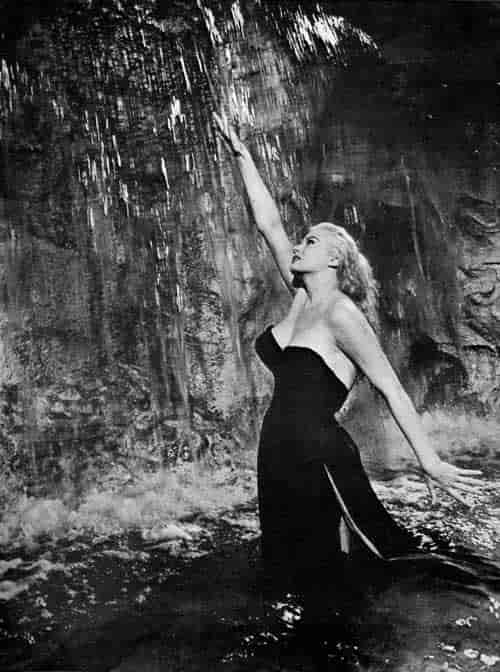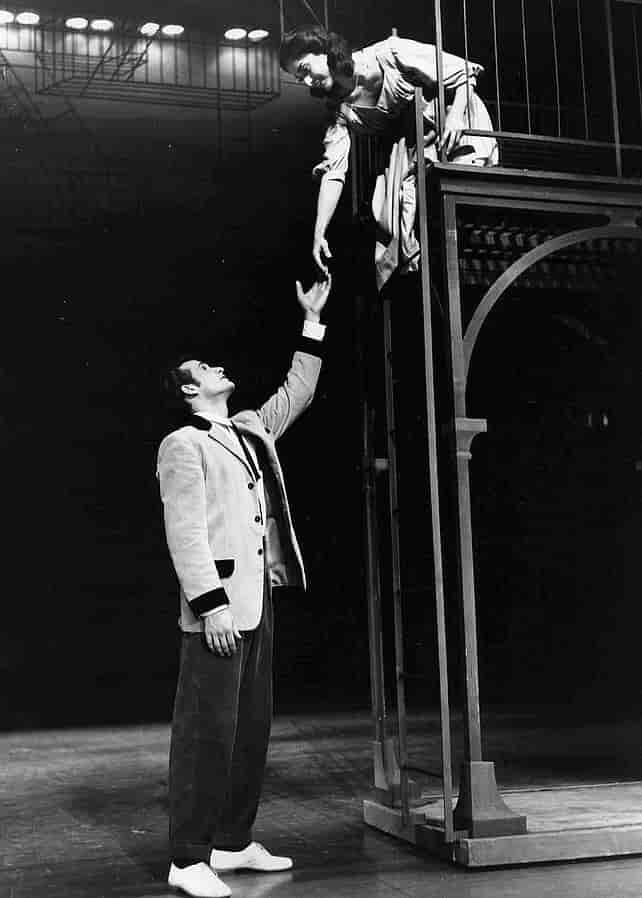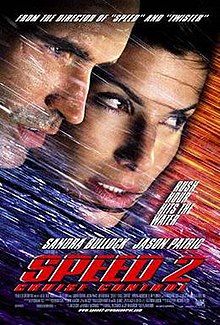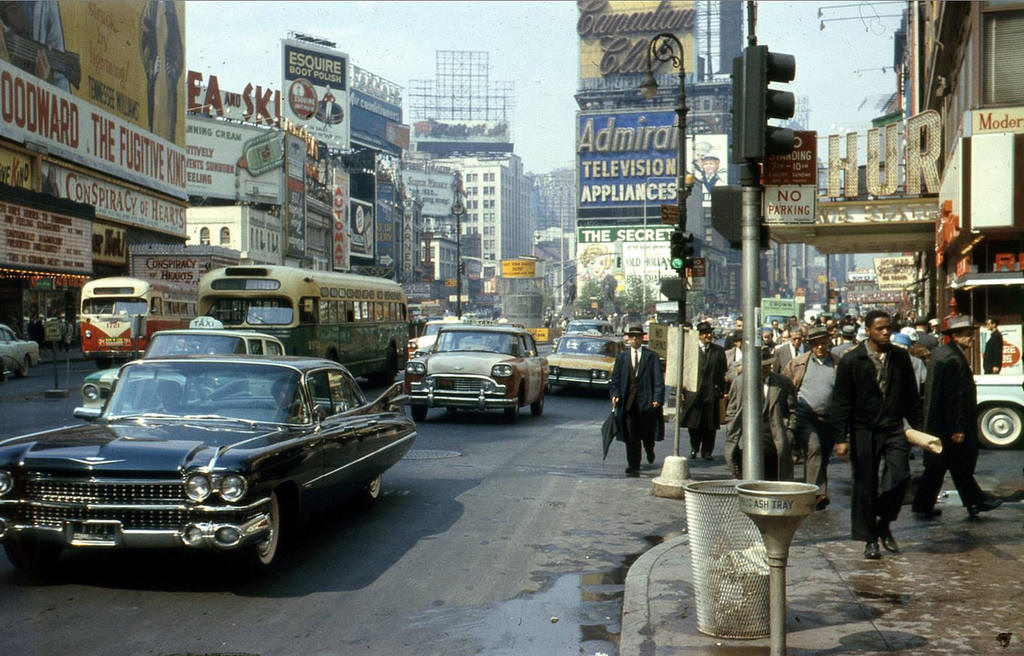
The 1960s: what a wild, transformative ride! This was a decade that shook up everything, from society and politics to, yes, even the silver screen. America and the world were buzzing with change—minority rights expanding, space travel becoming a reality instead of just a dream, and counterculture gaining serious momentum. It was a time when the old Hollywood studio system was giving way to something fresh and exciting, paving the way for independent cinema, the rise of New Hollywood, and the glorious end of strict censorship laws.
But it wasn’t just Hollywood that was cooking up cinematic magic. This era was a global banquet of incredible films! France saw its New Wave fully established, Italy gave birth to the gripping giallo genre, and Japan continued its streak of producing classic after classic. The 1960s stand as a critical decade in cinema history, and the best films from this period really capture that unique feeling of an era bursting with innovation. These aren’t just great movies; they’re enduring films that still blow us away more than 60 years later.
While the ’60s delivered some fantastic comedies, romances, and dramas, it also saw other genres like horror, sci-fi, and musicals reach incredible heights of popularity. Visionary directors like Stanley Kubrick, Federico Fellini, Akira Kurosawa, and Jean-Luc Godard left their indelible marks with iconic films. And talk about star power! Actors like John Wayne, Julie Andrews, Paul Newman, Sean Connery, Richard Burton, and Omar Sharif were absolutely ruling the box office. But what truly set some films apart were their sheer scale, ambition, and lasting impact—the absolute giants of the silver screen that we’re about to dive into.

1. 2001: A Space Odyssey (1968)
Stanley Kubrick’s 2001: A Space Odyssey isn’t just a film; it’s an experience, a monumental achievement that stands as one of the most influential films ever made. Released in 1968, it plunged audiences into a mysterious space mission, following astronauts and their famously erratic ship’s computer system, HAL. The film, co-written by Arthur C. Clarke and based on his short stories, has a deeply contemplative and somewhat disparate feel that initially left many viewers scratching their heads.
Imagine the scene: at the New York premiere, 250 people reportedly walked out, and at the L.A. premiere, actor Rock Hudson notably left early after muttering, “What is this bull?” Initial reviews were a mixed bag, to say the least. However, the tide of critical opinion changed, and “2001” has been fully reassessed as one of the greatest films ever made, period. It’s a testament to its visionary scope and timeless themes that it continues to captivate and challenge audiences today.
This film isn’t just about space travel; it’s a deep dive into evolution, artificial intelligence, and humanity’s place in the cosmos. Its stunning visuals, pioneering special effects, and groundbreaking use of classical music were decades ahead of their time, creating an immersive, almost spiritual journey. “2001: A Space Odyssey” is a profoundly stylish and thought-provoking film that left a considerable, indelible mark not only on the sci-fi genre but on the entire history of cinema. It truly embodies what it means to be a “giant of scale” on the silver screen.
Read more about: Unveiling the Titans: 13 Legendary Directors Who Redefined the Art of Cinema
2. La Dolce Vita (1960)
Prepare for a journey through the decadent nightlife of Rome with Federico Fellini’s “La Dolce Vita,” another iconic Italian film from 1960 that redefined cinematic style and narrative ambition. This nearly three-hour masterpiece follows a reporter through a series of episodic situations, painting a vivid character study of both the protagonist and the stylish, yet decaying, society he chases. It’s profoundly stylish, filled with many iconic visuals that have been seared into the collective consciousness of film lovers.
Despite its impressive length, “La Dolce Vita” never struggles with its runtime, drawing you into its world with captivating performances by Marcello Mastroianni, Anouk Aimée, and the unforgettable Anita Ekberg. The film’s portrayal of a society teetering on the edge of moral decay was so provocative that it faced heavy censorship upon its first release and was even banned in some countries. The Vatican famously condemned it, seeing it as a “parody of the second coming of Jesus,” which only added to its legendary status.
Despite the controversy, “La Dolce Vita” was incredibly well-received in America and garnered four Academy Award nominations, a testament to its artistic merit. Its influence is undeniable, having been referenced in countless later films, from “Lost in Translation” to “L.A. Story.” It consistently appears on “best film” lists, and none other than Roger Ebert called it his favorite film, including it in his top ten films for Sight & Sound’s poll. This film isn’t just stylish; it’s a profound cultural document, a true “giant of scale” in its sweeping social commentary and visual grandeur.
Read more about: Unveiling the Titans: 13 Legendary Directors Who Redefined the Art of Cinema

3. Spartacus (1960)
If you’re looking for an absolute epic, look no further than Stanley Kubrick’s “Spartacus,” released in 1960. This is a monumental tale of rebellion and the fight for freedom, boasting a grand scale that few films have ever matched. The film stars the legendary Kirk Douglas as the titular character, a gladiator who ignites a massive revolt against the oppressive Roman Empire. With a stellar ensemble cast, including the formidable Laurence Olivier and the radiant Jean Simmons, the performances in “Spartacus” are nothing short of exceptional.
Kubrick’s meticulous attention to detail, combined with the sheer grandeur of the production, creates an incredibly immersive historical experience. Every frame feels painstakingly crafted to transport you back to ancient Rome, from the brutal gladiatorial arenas to the sweeping battlefields where thousands clash for liberty. The film delves deep into themes of freedom, justice, and the human spirit’s indomitable will to defy oppression, making it a powerful and timeless commentary on human rights.
“Spartacus” remains a quintessential classic, celebrated for its ambitious scope and its resonant message of defiance against tyranny. It earned multiple Academy Awards, including Best Supporting Actor for Peter Ustinov, and its legacy as one of the greatest historical epics is firmly cemented. It’s not just a story; it’s a spectacle, a heroic saga that perfectly encapsulates the “giants of scale” ambition of 1960s cinema.
Read more about: The Director’s Chair: Unpacking the High-Stakes World of Hollywood Firings and How Creative Differences Reshaped Cinematic History
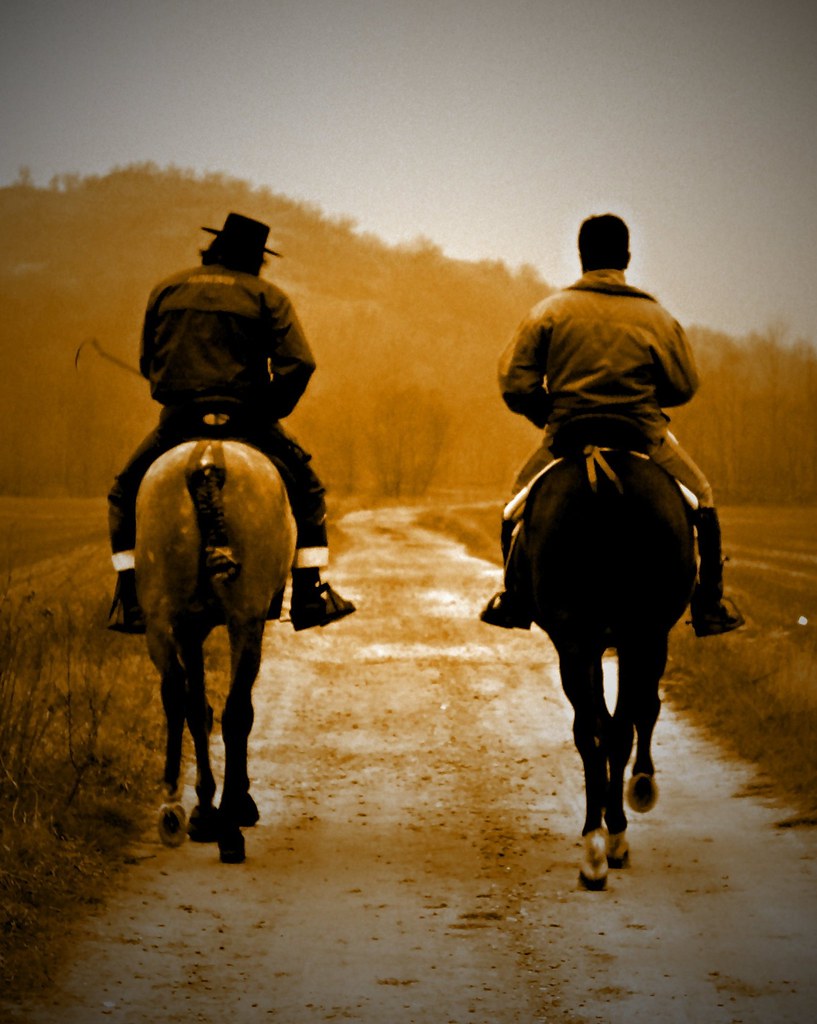
4. Once Upon A Time in the West (1968)
While the classic American Western genre began to wane by the 1960s, a new, exhilarating breed emerged: the Spaghetti Western. And leading the charge, arguably the best of the genre, is Sergio Leone’s “Once Upon a Time in the West” from 1968. This sub-genre, characterized by its films set in the American West but made by Italian directors, exploded in popularity, and Leone was its undisputed master, having already given us “A Fistful of Dollars” and “The Good, the Bad and the Ugly.”
This epic tells the story of a hired gunman attempting to force a homeowner off a crucial piece of land needed for railroad expansion. However, a dramatic shootout complicates matters, quickly turning the job into a complex narrative of vengeance and survival. The film boasts an incredible cast, featuring Henry Fonda in a chilling villainous role, alongside Charles Bronson, Jason Robards, and the incomparable Claudia Cardinale, each delivering unforgettable performances that add immense depth to the sprawling narrative.
“Once Upon a Time in the West” initially opened to poor reviews, but like many truly visionary films, it eventually gained a massive cult following and was deservedly reevaluated by critics and audiences alike. Its monumental influence on cinema is clear; it was selected for preservation by the Library of Congress in 2009 and frequently appears on “best-of-film” lists. With its iconic Ennio Morricone score, vast landscapes, and morally ambiguous characters, this film is a towering achievement, a true “giant of scale” that reshaped the Western genre forever.
Alright, film fanatics, buckle up because our journey through the cinematic titans of the 1960s is far from over! We’ve already dipped our toes into some truly game-changing movies, but trust us, the well of ’60s genius runs deep. This decade was a powerhouse, birthing films that didn’t just entertain; they pushed boundaries, challenged perceptions, and left an indelible mark on culture itself. We’re talking about movies that were epic in scope, groundbreaking in their artistry, and simply unforgettable. Get ready as we continue our adventure through five more unforgettable epics that captured the imagination of the 1960s, highlighting their immense production, cultural impact, and enduring legacy that still captivates us today!
Read more about: Inside John Mayer’s Exotic Guitar Arsenal: From Vintage Fender Stratocasters to Custom Paul Reed Smith Axes

5. Harakiri (1962)
Talk about a film that grabs you by the soul and refuses to let go! Masaki Kobayashi’s 1962 masterpiece, “Harakiri,” isn’t just a samurai movie; it’s an absolute cinematic triumph that consistently ranks among the best of the genre. It plunges us into the world of a ronin during Japan’s Tokugawa shogunate, who requests to commit the ritualized suicide of seppuku at a local lord’s manor. What unfolds is a deeply layered and profoundly moving narrative that challenges traditional notions of honor and loyalty.
This isn’t just a tale of swords and feudal Japan; it’s a stunning exploration of power, the illusion of glory, and the crushing weight of control within a rigid societal structure. Kobayashi’s direction is nothing short of magnificent, crafting a visually beautiful film that uses its stark black-and-white cinematography to heighten the drama and emotional intensity. Every shot is meticulously composed, drawing you deeper into the ronin’s plight and the moral dilemmas he faces.
“Harakiri” was immediately recognized for its brilliance, earning the Special Jury Award at the prestigious 1963 Cannes Film Festival. Its legacy only continues to grow, with critics and audiences alike celebrating its enduring power. It currently boasts a perfect 100% on Rotten Tomatoes and is even the highest-rated film on Letterboxd – talk about a ringing endorsement! While a 2011 remake exists, the original 1962 version is undeniably superior, a true testament to its timeless storytelling and filmmaking artistry. If you’re looking for an ‘epic’ that delivers both visceral action and profound contemplation, this is it!
6. West Side Story (1961)
Oh, honey, if you haven’t seen “West Side Story,” you are truly missing out on a musical epic that defines the genre! This 1961 cinematic sensation, directed by Robert Wise and Jerome Robbins, brilliantly adapts Shakespeare’s “Romeo and Juliet” into a vibrant, high-stakes drama set amidst the bustling street gangs of 1950s New York. It’s a dazzling explosion of music, dance, and raw emotion as the star-crossed love story of Tony and Maria plays out against the backdrop of racial tensions between the Jets and the Sharks.
The film’s choreography is legendary, a kinetic ballet of rivalry and romance that pulsates with energy and artistry. And the score? Forget about it! With iconic songs by Leonard Bernstein and Stephen Sondheim, like “Tonight” and “America,” it’s simply unforgettable and etched into the fabric of popular culture. This powerhouse combination of visual and auditory brilliance didn’t just charm audiences; it swept the Academy Awards, winning an astounding 10 Oscars, including Best Picture! Now that’s what we call a smash hit that cemented its place as a silver screen giant.
Beyond the spectacle, “West Side Story” is a powerful social commentary, tackling complex themes of love, conflict, and community dynamics in 1960s America. It dared to explore issues of race and identity, resonating deeply with audiences then and now. The film’s impact is so profound that even its 2021 remake continued its Oscar legacy, with Rita Moreno and Ariana DeBose both winning Best Supporting Actress for their portrayal of Anita—making them the only two Latinas to have won in the category from the same role!
It’s important to acknowledge that the film, like many from its era, features a ‘brownface issue’ with several white actors playing Puerto Rican characters, including the lead Natalie Wood. While this is a critical historical context for the film, it doesn’t diminish its monumental artistic achievements in music, dance, and storytelling. It remains a groundbreaking, emotionally charged epic that forever changed the landscape of movie musicals and continues to spark conversations about representation and timeless love stories.
Read more about: Unearthing Automotive Gold: 14 Surprise Gems That Blew Away All Expectations

7. Planet of the Apes (1968)
Get ready for a mind-bending trip to a world turned upside down with Franklin J. Schaffner’s “Planet of the Apes”! This 1968 Sci-Fi classic is not just a film; it’s a phenomenon that has captivated generations. It plunges us into the terrifying predicament of a human spaceship crew who crash-land on a mysterious, desolate planet, only to discover it’s not humans who rule, but intelligent, humanoid apes! Starring the legendary Charlton Heston as the bewildered astronaut, alongside Roddy McDowall and Kim Hunter as sympathetic apes, this film delivers thrills, suspense, and a whole lot of thought-provoking sci-fi goodness.
The premise alone is iconic, and honestly, even if you’ve never seen the original, chances are you’ve encountered its unforgettable imagery and shocking twist ending. “Planet of the Apes” has been parodied, homaged, and referenced countless times across pop culture, making its core concepts feel strangely familiar to everyone. It wasn’t just a standalone hit; it immediately became the foundation for a massive franchise, spawning multiple sequels, prequels, and an entire extended universe that continues to expand and evolve.
This movie isn’t just about cool ape makeup and thrilling chases; it’s a deep dive into themes of evolution, social hierarchies, and humanity’s destructive tendencies. It challenged audiences to consider their place in the natural order and critiqued societal norms, all wrapped up in a gripping, action-packed package. “Planet of the Apes” stands as a true giant of the silver screen, not just for its groundbreaking sci-fi narrative and special effects, but for its immense cultural footprint that continues to resonate and inspire. Seriously, if you’re looking for a classic sci-fi epic, this one is a must-watch!
Read more about: 13 Action Films That Crumbled at the Finish Line: When Great Stories Get Betrayed by Their Endings
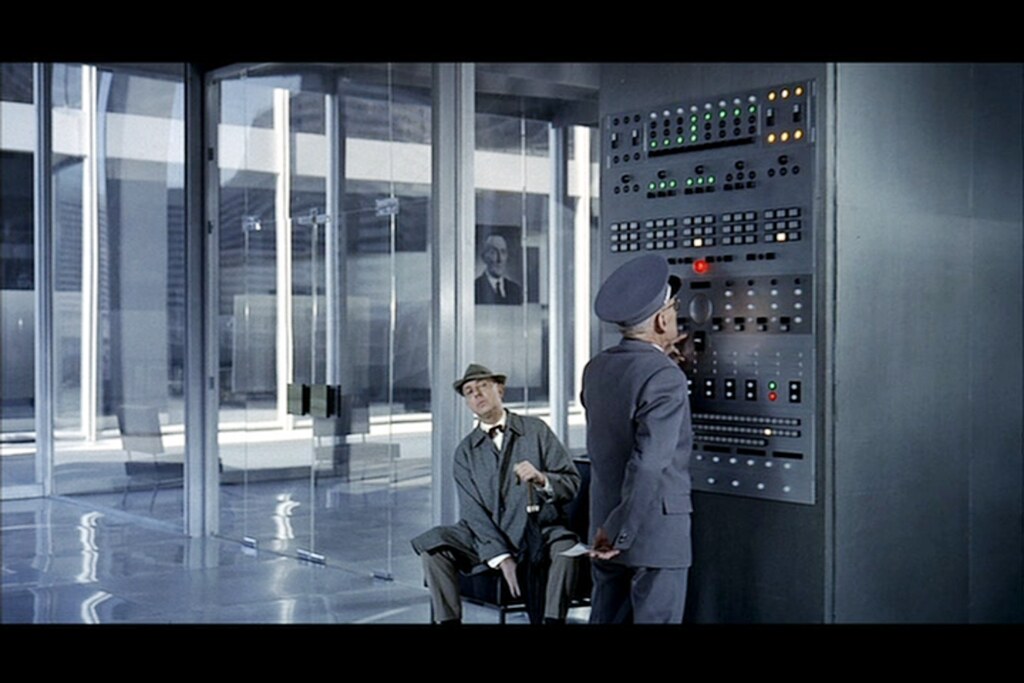
8. Playtime (1967)
If you want to talk about a true “giant of scale” in every sense of the word, you absolutely cannot skip Jacques Tati’s 1967 masterpiece, “Playtime”! This French comedy is a truly unique cinematic experience, connected to Tati’s beloved Monsieur Hulot character, but elevating his artistic vision to unprecedented heights. It follows the bewildered Monsieur Hulot as he navigates a complex, ultra-modern, and somewhat bewildering Parisian cityscape, subtly intersecting with the experiences of an American tourist. It’s a film that demands your attention to its exquisite visual gags and meticulously choreographed chaos.
What makes “Playtime” an undisputed epic of scale isn’t just its clever humor, but its colossal production. This film was incredibly expensive for its time, a monumental undertaking that truly pushed the boundaries of filmmaking. It was shot on high-resolution 70mm film, giving every frame an astonishing level of detail. Even more impressively, Tati had a massive, intricate set — famously dubbed ‘Tativille’ — constructed specifically for the film. This wasn’t some small studio affair; the set required a staggering 100 workers to build and even necessitated its own dedicated power plant just to bring Tati’s vision to life!
The result is a visually stunning and iconic film, where the sprawling, modernist architecture becomes as much a character as the people inhabiting it. Every corner of the frame is alive with subtle gags and observations about modern life, making it a film you can revisit countless times and still discover new delights. It’s more than just a comedy; it’s a work of art that feels a bit like a modernist Chaplin, using humor to reflect on the absurdities of human interaction in an increasingly technological world. “Playtime” is an astounding achievement that showcases the sheer ambition and creative genius possible on the silver screen.
Read more about: Unleashing the Legends: The 15 Most Valuable 1970s Cars Commanding Top Dollar Today

9. Dr. Strangelove or: How I Learned to Stop Worrying and Love the Bomb (1964)
And now, for our final epic on this incredible journey through the ’60s, let’s talk about the one, the only, Stanley Kubrick’s “Dr. Strangelove or: How I Learned to Stop Worrying and Love the Bomb” from 1964. This film isn’t just arguably the best comedy of the 1960s; it’s often hailed as one of the greatest comedies of all time, full stop. But beneath the uproarious laughter lies a chillingly dark satire about the unthinkable: nuclear annihilation during the Cold War. It follows a terrifying scenario where an unhinged American general initiates a plan to drop a nuclear bomb on the Soviet Union, setting off a chain of events that could end the world.
Kubrick, the master filmmaker he was, assembled an absolutely stellar cast, led by the incomparable Peter Sellers, who delivers three wildly distinct and iconic performances: a stiff-upper-lipped British officer, the bewildered American President, and the titular Dr. Strangelove, a former Nazi and chillingly enthusiastic nuclear war expert. Alongside powerhouses like George C. Scott, Sterling Hayden, and Slim Pickens, the performances are nothing short of brilliant, creating a world teetering on the edge of the abyss with a straight face.
“Dr. Strangelove” was quickly nominated for four Academy Awards, and its genius was recognized early on when it became one of the first 25 films selected for preservation in the Library of Congress. Its blend of dark humor and terrifying reality makes it an enduring classic, reflecting the anxieties of its time while remaining shockingly relevant today. The film brilliantly dissects the absurdity of military bureaucracy and the sheer madness of mutually assured destruction, leaving audiences laughing nervously as they confront humanity’s capacity for self-destruction.
This film’s “epic” status isn’t built on sprawling battlefields or grand romance, but on its monumental thematic scope and the audacious way it tackles such a grave subject with such wit and satirical bite. It’s a film that dared to find humor in humanity’s darkest hour, leaving an unforgettable and profoundly influential mark on cinema and our collective consciousness. “Dr. Strangelove” is a hilarious, horrifying, and utterly essential piece of ’60s filmmaking, proving that scale can also be measured by a film’s courage to confront the biggest, most terrifying ideas.
Wow, what a ride through the cinematic giants of the 1960s! From the mind-bending depths of space to the gritty streets of New York, from ancient Rome to a satirical war room, these films truly broke the mold and showed us what movies could be. They weren’t just entertainment; they were cultural touchstones, technological marvels, and artistic statements that resonated with audiences across the globe. Each of these epics, whether through their sheer production scale, groundbreaking storytelling, or profound cultural impact, redefined what was possible on the silver screen. So go ahead, cue up one of these bad boys, settle in, and let yourself be swept away by the unforgettable magic of the ’60s! Dig it, because these films are still out of sight! Seriously, get watching!

